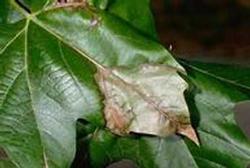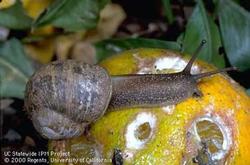Anthracnose
Q. The new leaves on my Modesto ash are dropping off in spring. There are irregular tan, brown, or white areas on the leaves, starting at the base of the leaf. Why? And will it kill the tree?
A. Modesto ash anthracnose is a fungus that infects the leaves and twigs. The fungal spores are spread by sprinkling and by splashing rain. They proliferate in moist spring weather. Anthracnose rarely kills the tree unless complete defoliation reoccurs over several years or there is severe branch dieback and large cankerous areas develop. The spores overwinter on twigs, so pruning out dead and infected twigs in winter will help with control as will thorough clean up of fallen branches and leaves. Fungicide sprays (lime sulfur and copper compounds) offer some control if properly applied on all new growth as buds open in spring. Repeat in 2 weeks if weather is wet. (Note: Anthracnose also affects American sycamore, California sycamore, London plane tree and Chinese elm. Spraying with fungicide on these trees has not proven effective. Anthracnose-resistant varieties of these trees are available.)
Pest Note: Anthracnose
Snails and Slugs
Q. My Hosta and other tender perennial plants are getting eaten by something. The leaves have big chewing marks and in some cases the whole plant is almost gone. What is eating my plants?
A. Snails and slugs are among the most troublesome garden pest. They like moist conditions and shelter from sunlight. They feed at night on decaying matter and do most damage on young seedlings and soft, tender leafy vegetative plant parts and fruit. To control snails and slugs eliminate hiding places and shelter spots. Handpicking can be effective if done regularly. Copper foil barrier tape on raised beds and around tree trunks is effective for keeping them out. Diatomaceous earth can be an effective barrier but difficult to maintain. Snail baits can be effective if used in conjunction with cultural practices.
Pest Note: Snails and Slugs



